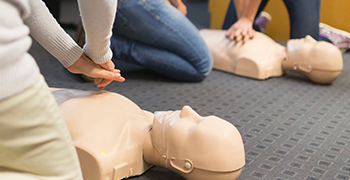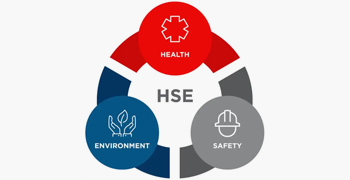Welding Academy
Proclad Academy is a registered SENSE Welding School and an AWS Educational Institute Member. There are two levels of certificate available with level one being basic level welding and fabrication skills and level two being more advanced. These tests cover a range of practical skills in joint preparation, measurement and joining techniques. Proclad Academy is able to customise welding training based on specific requirements of the clients on the following types of welding:
- Shielded Metal Arc Welding (SMAW) on different kind of steels
- Gas Tungsten Arc Welding (GTAW) on different kind of steels
- Gas Metal Arc Welding (GMAW) on different kind of steels
- Flux Cored Arc Welding (FCAW) on different kind of steels
- Oxy Fuel Welding (OFW)
- Copper Brazing
In addition, Proclad Academy works with a range of third party inspection agencies that can qualify weld procedures specification and arrange observation for welding tests. Our facilities meet international standards and, with 50 bays, we are one of the largest welder training centers in the region.
Course Description:
This course is designed to enable the student to recognize and apply proper fundamentals of Shielded Metal Arc Welding (SMAW). The student will demonstrate safe and correct set up of the SMAW workstation; associate SMAW electrode classifications with base metals and joint criteria; demonstrate proper electrode selection and use based on metal types and thicknesses; perform multiple layer weld beads in all type of joints and performs visual inspection of welds. Safety practices are emphasized.
Learning Outcomes:
After successfully completing the program, the trainee will be able to:
- Demonstrate safe workplace practices by identifying potential hazards by:
- Reading Materials Safety Data Sheets (MSDS)
- Identifying personal protective equipment for task
- Describe and employ safe work practices
- Describe safety precautions when using trade-related hand and power tools and equipment
- Select appropriate trade-related equipment for the job
- Describe and identify conventional weld symbols
- Recognize and interpret weld symbols
- Perform welds in accordance with the standard
- Demonstrate proper work and travel angle, travel speed and length of arc
- Repair and rectify welds
- Demonstrate the skills and knowledge needed to setup and operate the shielded metal arc welding (SMAW) equipment safely.
- Demonstrate the manipulative skills needed to make successful welds utilizing the Shielded Metal Arc Welding (SMAW) process that will comply with industry standards.
- Perform welds in all type of joints using SMAW process in all position.
Practical Requirements:
- Weld on fillet and groove in all position on steel and alloy steel using appropriate electrodes
- Weld on pipe from rolled to fixed position
- Perform grinding using abrasive wheel
- Perform weld test using visual and guided bend test
Course Description:
This course is designed for individual who want to upgrade their skill to qualify themselves on this process. It includes instruction in gas metal arc welding on materials of varying thickness. It involves welding various joint designs in all positions in pipe and in plates.
Learning Outcomes:
After successfully completing the program, the trainee will be able to:
- Demonstrate safe workplace practices by identifying potential hazards by:
- Reading Materials Safety Data Sheets (MSDS)
- Identifying personal protective equipment task
- Describe and employ safe work practices
- Describe safety precautions when using trade-related hand and power tools and equipment.
- Select appropriate trade-related equipment for the job
- Describe and identify conventional weld symbols
- Recognize and interpret weld symbols
- Perform welds in accordance with the standard
- Repair and rectify welds
- Select correct gases, voltage, filler wire size and wire feed speed
- Demonstrate proper work and travel angle, travel speed and electrode stick-out for welding with GMAW machine
- Perform Gas Metal Arc Welding (GMAW) on fillet and groove weld in all positions using various filler wires on steel and alloy steel.
Practical Requirements:
- Setting-up GMAW machine and familiarize its accessories
- Run welds using forehand and backhand techniques
- Perform grinding using abrasive wheel
- Weld in all position with multiple passes in fillet and groove welding
- Perform weld test using visual inspection and guided bend test
Course Description:
Gas Tungsten Arc Welding (GTAW), also known as tungsten inert gas (TIG) welding is a process that produces an electric arc maintained between a non-consumable tungsten electrode and the part to be welded. The heat-affected zone, the molten metal, and the tungsten electrode are all shielded from atmospheric contamination by a blanket of inert gas fed though the GTAW torch. Inert gas (usually Argon) is inactive or deficient in active chemical properties. The shielding gas serves to blanket the weld and exclude the active properties in the surrounding air. Inert gas such Argon and Helium, do not chemically react or combine with other gases. They pose no odor and are transparent, permitting the welder maximum visibility of the arc. In some instances Hydrogen gas may be added to enhance travel speeds.
The GTAW process can produce temperature of up to 35,000O F (19,426O C). The torch contributes heat only to the work piece. If filler metal is required to make the weld, it may be added manually in the same manner as it is added in the oxyacetylene welding process, or in other situations may be added using a cold wire feeder. GTAW is used to weld steel, stainless steel, nickel alloys such as Monel and Inconel, titanium, aluminum, magnesium, copper, brass, bronze and even gold. GTAW can also weld dissimilar metals to one another such as cooper to brass and stainless steel to mild steel.
Learning Outcomes:
After completing the course, the trainees must be familiarize with:
- Safety precautions in Welding GTAW Process
- Principles of Gas Tungsten Arc Welding (GTAW)
- Welding procedure of GTAW
- Advantages and Dis advantages of GTAW from other welding process
- Selecting power source of GTAW
- Typical welding system of GTAW
- Selecting and preparing tungsten for AC and DC Welding
- Shielding Gases used in GTAW
- GTAW welding techniques
Practical Requirements:
- Set-up GTAW equipment and checking various external components
- Preparing proper (PPE)- Personal Protective Equipment for the demonstration
- Run beads on the testing mild steel plate
- Perform a visual weld inspection during and after the activity finished
Pre-Requisite:
The trainees must have experience in Shielded Metal Arch Welding (SMAW) using various electrodes.
Course Description
Oxyacetylene welding involves placing two pieces of metal (usually carbon steel) close together and heating the junction until it melts, and the base metal flows together. Something additional metal, called filler metal is added in the form of a welding rod which is added to the puddle of molten base metal. Filler metal is usually added to make up any gaps in the weld.
Oxyacetylene welding used to be the most common methods of welding steel before the invention of the arc welder. This method of welding has mostly fallen out of favor for manufacturing because the relatively low heating rate (relative to an arc welder) can cause warping and thermal damage to a wide area around the weld. Oxyacetylene welding is still often used in small shops and by artist, but is not generally used in manufactured goods because of the lower weld quality.
Oxyacetylene welding is used almost exclusively for the securing of carbon steel, but is also used frequently by jewelers for welding gold and silver. Some metals such a aluminum and titanium cannot be welded using an oxyacetylene torch and must be welded using GTAW (TIG) or GMAW (MIG) techniques.
Oxygen and acetylene combine into oxyacetylene to form the hottest burning and most widely available combination of gasses. MAPP gas burns at a paltry ˜3000 degrees centigrade, while Oxyacetylene will manage 5500 degrees centigrade at stoichiometric ratios.
Learning Outcomes:
After completing the course, the trainees must familiarize with:
- Safety procedure and precautions during and after welding/cutting using OAW
- Principles of Oxyacetylene Welding/cutting
- Components and set-up of the equipment use in OAW
- Procedures of Oxyacetylene Welding/cutting
- Advantage and Dis-advantages of using Oxyacetylene
- Technique in Oxyacetylene Welding/cutting
Practical Requirements:
- Set up OAW equipment and checking various internal and external components
- Run beads on testing plates by welding using different techniques
- Cutting testing plates using OAW using proper position
- Perform visual inspection after and before welding and cutting process
Course Description:
This is a one month / 120 hours / 6 hours a day course designed to develop student skills in two basic and important weld¬ing proc¬esses—shielded metal arc welding and oxy-fuel welding. In addition, trainees will receive train¬ing in oxy-fuel cutting and brazing. The curriculum consists of pro¬gres¬sive and compe¬tency-based skills projects utilizing individualized training with the instruc-tor. This re¬quire judicious time management to complete the projects on time, but the reward will be the skill and confidence of learning these ver¬satile welding and cutting processes.
Learning Outcomes:
Shielded Metal Arc Welding
- Learn to do surface welding using E-6010 and E-7018 electrodes
- Learn to cut metal for welding by using the manual and track cutting torches
- Learn to weld horizontal and vertical tee joints
OXY-Fuel Welding
- Learn to bead in the four welding positions
- Learn to weld the square-groove butt joint
- Learn to weld horizontal and vertical lap joints
- Learn to weld horizontal and vertical tee joints
OXY-Fuel Welding
- Learn to bead in the flat position
- Learn to braze flat butt/scarf joints
- Learn to braze horizontal lap joints
Course Description:
This course was designed to answer important welding questions and teach the most up-to-date information about maintenance welding. Welding technicians and personnel working in industrial pants, construction, manufacturing, and metal working and fabrication shops will benefit from this course. Whether you are a novice technician and need a comprehensive overview of welding best-practices or an experienced technician and need a refresher course or to learn some new ideas, this course is for you! The real world, practical knowledge presented in this course will allow students to go back to their workplace and immediately improve the quality of their welds
Course Objectives:
After completing the course, students will receive a training certificate that shows indicating that the student understands the following competencies:
- What welding techniques to use for different applications
- How to select between SMAW, GMAW & GTAW and other welding processes
- How to weld on different metals
- How to weld on alloys
- Proper metal filler selection for all applications
- The hazards associated with welding and how to prevent injury to self or others



